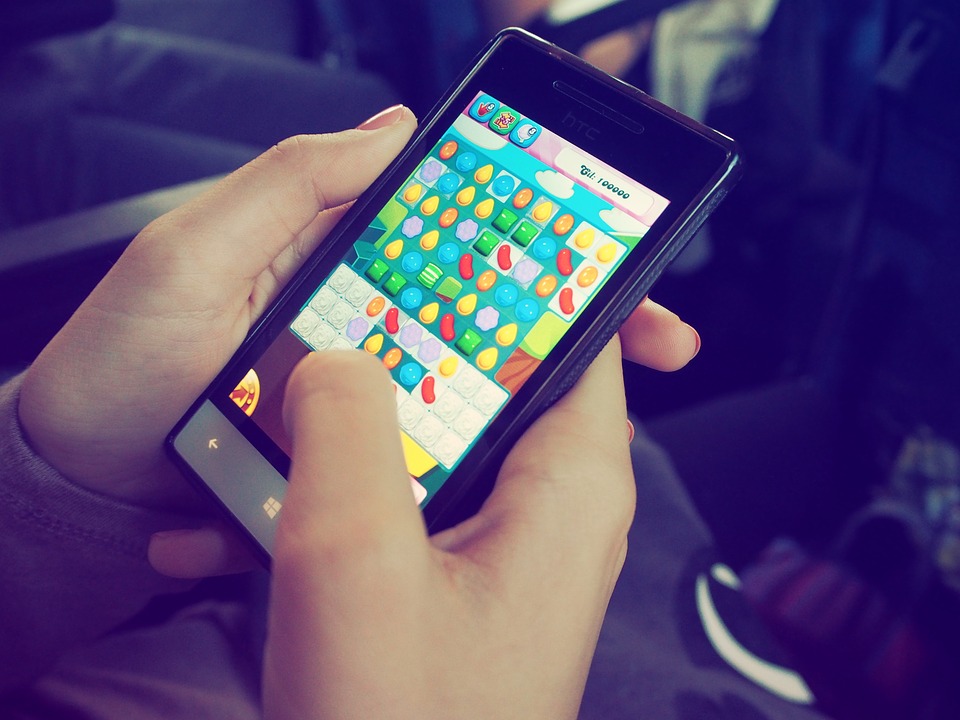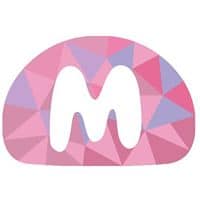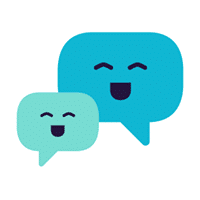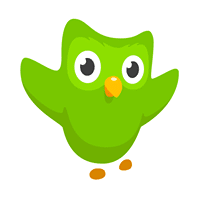
The Gamification of Language Learning
Gamification is a little bit different from Game-based Learning (GBL). While gamification involves applying the rules of a game to a task or lesson, GBL involves using an actual game to teach something (like this board game that teaches middle schoolers about math).
Both gamification and GBL can incentivize learning with competition and fun. They add game elements like prizes, missions, points, rankings and score streaks. Here, I’ll point you to language resources that make use of both techniques.
Contents
- Do Gamification and Game-based Learning Work?
- How to Make Language Learning Gamification and GBL Work for You
- Get Fluent with Games: 5 Addictive Language Learning Gamification Options
Download: This blog post is available as a convenient and portable PDF that you can take anywhere. Click here to get a copy. (Download)
Do Gamification and Game-based Learning Work?
What do the experiments and examinations into gamification say? Here’s a look at some recent research.
Gamification Research
A New York University journalism professor injected his 14-week course with gamification. He took the class to Wall Street for some journalistic sleuthing and turned information gathering into a healthy class competition.
When tested on the material a week later, students recalled more of their gamified scavenger hunt than information they read just a few minutes earlier!
This aligns with a 2006 report from the Summit on Educational Games by the Federation of American Scientists that claims students recall only 10 percent of the things they read and 20 percent of the material they hear. But when experiencing the material themselves, even if it’s just in a simulation or a game, recall can climb as high as 90 percent.
Gamification has also been adopted by corporations in the hopes of boosting customer engagement and increasing bottom lines.
For example, even Domino’s Pizza is getting in on the action, gamifying the ordering process through their app. Gamification has also been tapped to influence health and lifestyle choices, from Nike’s FuelBand, which gamifies feedback about physical activities, to Piano Stairs, which saw a 66 percent increase in people’s use of stairs.
So what’s this all mean for language learners? Gamification has been shown to increase people’s interest in and engagement with even boring tasks like ordering pizza or taking the stairs. That makes it a great resource for shaking up your study regimen and practicing grammar, vocabulary and more.
Still don’t believe that gamification can work? Here’s a list of 90 gamification applications and some stats on how successful they’ve been.
Game-based Learning Research
A University of Florida study reported higher math achievement by students who played math computer games.
Students said that the game was fun and challenging, while teachers concurred with the quantitative results, noting that said students did indeed have improved understanding of the subject—and added that the game overcame their math phobias and made them want to learn.
Well, that’s all well and good. But how about games applied to language learning?
Researchers from Nanyang Technological University in Singapore have examined the effectiveness of today’s gamified second language learning apps. They found that these apps have benefits for efficient learning and that the way information builds on itself (like in-game “levels”) can reinforce previously learned lessons.
They also found strong initial motivation for these apps, but it should be noted that dropout rates are also high. Researchers emphasize that gamification can be an effective learning tool but should probably not be anyone’s sole study method.
That said, there are some exciting gamified and game-based tools out there for language learners (we’ll point you to some great ones later in this post) and with some smart strategies, you can get the most out of them based on your learning style and goals.
How to Make Language Learning Gamification and GBL Work for You
- Overlearn the levels. Repeat the whole game if you have to. Your ultimate goal is to learn the language. Remember that. It’s not to beat the game or rack up as many points as possible. The game and the different gamified elements are just vehicles to a more important goal—learning the language.
So if you’ve passed a level, or even finished the game, don’t think yourself too cool to go over the whole thing again. Going back to corners you’ve gone before not only cements what you’ve already learned, it serves to remind you why you’re doing it in the first place.
- Practice in a non-game environment. Maximize those gamification and GBL apps by bringing their lessons outside the game environment. That is, try to actually use the skills that you’ve learned in real life. For example, look for native speakers to try new vocabulary out on. Apps like Bilingua and HelloTalk can help you find language exchange partners.
You can also integrate the vocabulary words into your day. Use sticky notes to label objects around the house as constant reminders. Or work the vocabulary into a deck of flashcards and start flipping.
- Track your progress and mark your language weak spots. Gamified resources are famous for giving you this type of data before you even ask for it. Built-in progress tracking tools help you pinpoint areas of the language that you need to work on. If you heed the data, you’ll get insights that ensure every minute in the game is time well spent.
If need be, get a journal and write down some notes. Are there specific words you have trouble with? Are there specific rules of grammar that always trip you up? Being honest with yourself and consciously getting a picture of your present language skills puts you in a better position to consistently improve.
- Cross-train by having multiple games targeting different language skills. There’s no one game, no silver bullet so perfectly fashioned that it delivers language fluency. So you’ll have to play many games and repeat them several times.
Different games focus on different language skills and have different learning approaches, as you’ll see below. Even if you start encountering the same words or concepts, the different environments, graphics and audio will help cement them in your memory.
- Connect with other language learners. A sense of community is very important for language learning. You cannot be an island unto yourself.
The names on those leaderboards aren’t merely a set of letters. There’s a breathing human being behind those names. And while you may not be able to get in touch with them directly, you can definitely meet kindred souls in language forums or language exchange sites and apps.
Don’t give in to the temptation that says, “I’ll just keep to myself for a few months. When I’m ready, I’ll engage.” No, engage now. Find somebody. Don’t hide behind the games.
- Try to create your own gamified learning experience! You don’t need to be an app developer. You just need pen and paper. Make rules. Make it fun for you.
It can be a series of tasks in the tradition of “Mission Impossible” for example, where you give yourself different tasks for a whole week—like collecting things in your house that start with the letter “s” in French.
You’ll quickly see that even before you start playing your game, the mere act of gamification—thinking about key concepts, words and goals in your target language—will get you engaged and motivated to learn. Creating this type of game will make you a winner in more ways than one.
Get Fluent with Games: 5 Addictive Language Learning Gamification Options
MindSnacks
MindSnacks, “games for your brain,” is one of the App Store’s 2011 winners of the “Best Education Apps of the Year.”
It’s really an awesome collection of games that you can use to learn Spanish, French, Italian, Portuguese, German, Chinese and Japanese. There are around nine games for each of the offered languages, and about 1,000 vocabulary words up for mastery.
For example, MindSnacks offers a game called “Swell” that’ll really keep you on your toes. Imagine this: You’re staring at your screen, which features a lone fish peacefully swimming about when suddenly the water level starts dropping.
You’re then presented with a vocabulary word and given two choices for its translation. Choose the correct one and the water level pops up a bit (before beginning to drop again as you’re presented with a new vocabulary word). Pick the wrong translation and your poor fish instantly dies and goes to heaven.
What happens is, as you get more questions right, the water level drops faster and faster and you have less and less time to think about your answer before the water reaches the bottom, killing your fish. You’re given three live fishes before the game is over.
Then there’s “Belly,” a picture recognition game where you help feed a hungry frog by pairing a word or phrase with its corresponding picture. The little frog then unleashes his sticky tongue to snatch the picture from the screen and into his belly.
As a player, you have an avatar, which levels up the more you play the games. MindSnacks keeps you interested because it’s like you’re taking care of an evolving avatar—which starts from being a harmless egg to an increasingly awesome creature. You get the feeling that you’re raising a pet while learning the target language.
The MindSnacks graphics may look all cute and cuddly, but this is one seriously useful app that’s great for all language learners.
FluentU
To truly get fluent, you’ll need to hear your target language the way native speakers really use it. FluentU is a unique tool that uses authentic target language videos to teach the languages naturally.
With FluentU, you get to watch diverse video clips including real-world interviews, movie trailers, YouTube clips and much more.
As you watch, you can explore the interactive subtitles. Click any word you’re interested in and you’ll get a definition, translation, pronunciation and usage. You can even cross-reference the word and see other videos that contain it, so you can have more contexts for its use.
After you’ve watched a video, the interactive elements of the program kick in. You’ll get quizzed on the new words you learned with engaging exercises and visual learning tools. You’ll be given performance indicators so you can track your accuracy as well as the percentage of each words from the video that you mastered or learned.
Each day as you watch and complete exercises, you’ll earn virtual currency and build up learning streaks. Plus, when you’re studying your flashcards, FluentU remembers what you’ve already learned and suggests questions based on that info, so you get a truly personalized learning experience.
Languagenut
Languagenut is a complete language learning platform containing stories, songs, tests and games. It was originally designed to be seamlessly integrated into classroom instruction. But that doesn’t mean individual language learners can’t take advantage!
Of interest for us here are the games and the gamified language learning elements. With Languagenut, you don’t just win points and gold medals. You actually see how well you’re doing compared to other learners on a leaderboard. It’ll give you the spark, that inner motivation to work on the program more—if only to see your name on a higher rank.
Speaking of games, there are over a dozen here, some of them involving an educational twist to a classic game.
For example, in Tic-Tac-Toe you still get the traditional nine-square playing board. But this time, there’s a picture or image behind each of the square. You can only mark that spot with your “X” or circle if you can give its name in the target language. So for maximum chances of winning, you’ve got to learn the previous vocabulary lessons really well.
In their version of Hangman, the stakes are even higher. You don’t just gradually see a human figure about to get the noose. This one has an environmental spin to it. To begin, you see a picturesque backdrop on your screen. You’re still given blanks corresponding to every letter of the answer, but every time you guess a letter wrong, something happens in the picture that turns it into something awful.
Maybe your grassland turns into a toxic dumpsite. Then your waters become polluted and animals start dying. Every wrong turn is bad for nature, so you have to know the answer early to avoid the total destruction of your scenery.
A lesson in nature preservation embedded in a language learning game? Sounds awesome to me!
The Language Game
The Language Game is a fun tool composed of mini-games. It’s something you can play with another language learner, perhaps a friend, a family member or relative. You don’t need an internet connection to play this one since you’ll download it to your computer.
The unique thing about the Language Game is that it can create competition even when two people are studying different languages. So if you’re studying Spanish and your friend is learning French, you can still go head to head because the game will adjust to your target languages when it’s your turn to play.
If you know “Blockbusters,” the game operates along the same lines. You’ll see a screen that’s populated with hexagonal tiles. Each tile represents a task: answering a multiple choice question; pairing a picture with its translation; etc.
The mission is to get to the other side of the board by strategically choosing hexagonal tiles. One player will go from left to right, and the other will go from right to left. The player who gets to the other side of the board using continuous tiles wins. (The twist is that when you’re able to “sandwich” your opponent’s tiles, that tile becomes yours and is flipped to your color.)
What’s especially motivating is that instead of some anonymous learner on the other side of the world, the person you’re playing with is someone you know. You can trash talk and tease each other, in real time. It makes language learning not only fun but also very competitive and challenging.
Duolingo
With over 100 million downloads, you know this app is doing something right.
Duolingo gets you to do a series of gamified language learning tasks, such as translating words and phrases back and forth, listening to a phrase and typing what you hear, pronouncing target language words into your phone’s mic or building sentences in your target language.
These tasks are delivered through micro-lessons arranged by theme. Each question that you answer correctly slowly fills up your progress bar. When you successfully complete a lesson, you’re rewarded with virtual currency, which you can use to buy yourself prizes (everything from extra lessons and bonus skills to cool outfits for the Duolingo mascot, Duo the owl).
And then there’s the “Double or Nothing” wager, where you bet your currency as a wager. And the deal is that if you’re able to go on Duolingo every day, for a full week, you’ll earn another five.
If these points and prizes aren’t enough motivation, Duolingo also peppers highlights of your achievements throughout its lessons. For example, there’s the “Sharpshooter” badge given to somebody who completes a new lesson without getting anything wrong. There’s also the “Triple Digits,” given to the user who earns 100 points in one day.
With Duolingo, you feel you’re constantly progressing toward something, and every minute feels like you’re winning. It’s very difficult to let go of that feeling. You always want to keep playing, keep winning (and keep learning)!
So, there you go!
You now know what gamification and game-based learning are all about. You have the resources you can tap and some tips on how to make them work double-time for you.
Can you imagine how easy learning a language can be if it’s mostly fun and games?
What are you waiting for?
Let gamification lead the way. Make a game out of your language journey.
Download: This blog post is available as a convenient and portable PDF that you can take anywhere. Click here to get a copy. (Download)







